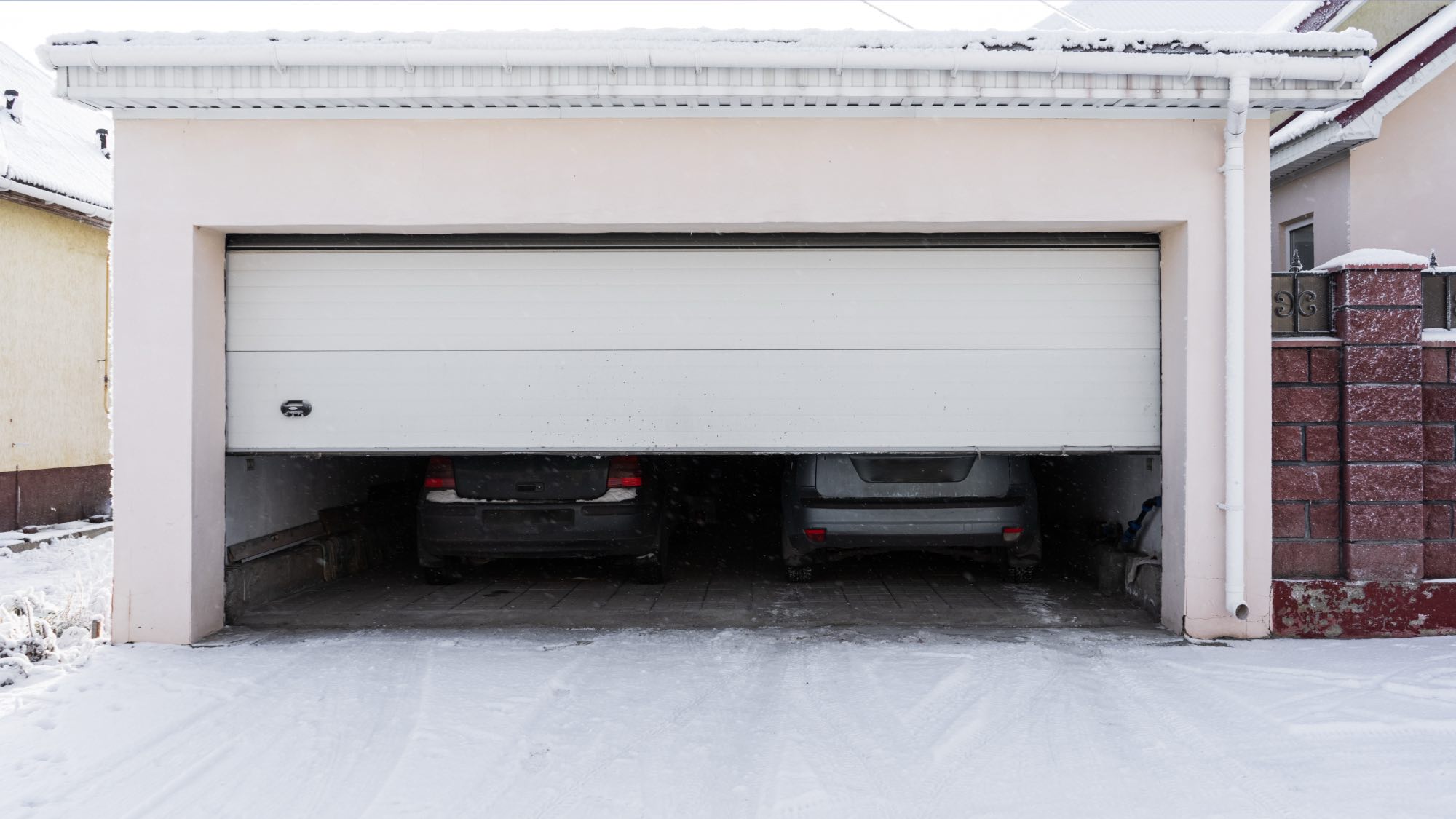Tom's Guide Verdict
The novel but pricey Netatmo Weather Station keeps tabs on your home’s temperature, humidity, air quality and noise level and syncs with your iOS or Android device.
Pros
- +
Attractive
- +
Durable design
- +
Intuitive interface
- +
Keeps tabs on CO2 levels in home
Cons
- -
Expensive
Why you can trust Tom's Guide
As Bob Dylan sang, you don’t need a weatherman to know which way the wind blows. With the $179 Netatmo Weather Station, that’s never been more true. But this device does more than just send temperature and humidity measurements to your Android or iOS device; it also records carbon dioxide (CO2) and sound levels in your house, giving you a better overall picture of the quality of your home environment.
Design
The Netatmo Weather Station is made of two components, an outdoor and an indoor module. Both are aluminum cylinders with white plastic end caps, which are attractive and will blend in with most environments.
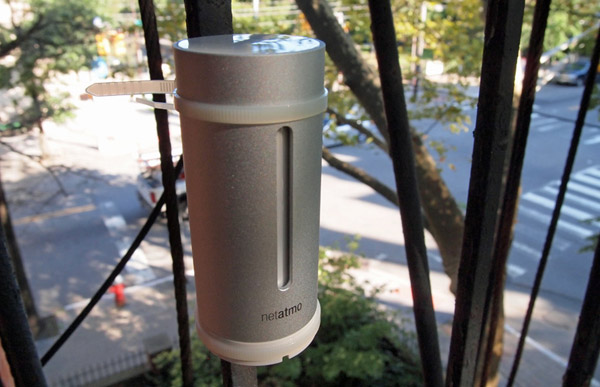
The smaller outdoor module is 1.75 inches in diameter and 4.25 inches long. The bottom of the module has a plastic screw cap that opens to reveal the battery compartment (four AAA batteries are included). A slot along the outside can be used to mount the device outdoors, using either the included screw and anchor bolt, or a Velcro strap. We recommend using the screw, as the strap ripped apart when we tried to tighten it around the monitor.
The larger indoor module measures 1.75 inches in diameter and 6.15 inches long. Its bottom also comes off to add batteries (AA in this case), but can be powered via the micro USB port on the side. A cord and power plug are also included.
Additional indoor modules cost $79; you can connect up to four together.
Setup
We first mounted the Netatmo outdoor module to our fire escape, and then plugged in the indoor module in our living room. The outdoor station transmits its data wirelessly to the indoor module, which then uploads it to the Internet via your Wi-Fi network. Netatmo recommends the two modules be no more than 300 feet apart. In our apartment, we had about a 30-foot separation and three walls between the two.
You can set up the Weather Station using either your notebook or mobile device. First, you must download the installer to your PC or Mac, or the Netatmo app to your Android or iOS device, and create a free account. Then, after launching the app (or installer), plug your device into the indoor module’s USB port. The installer then configures the Weather Station to connect to your home Wi-Fi network, using the settings in your phone or notebook. In all, installation and setup took about 10 minutes.
Get instant access to breaking news, the hottest reviews, great deals and helpful tips.
App
The Netatmo app has a very clean design. The upper half of the screen shows the outdoor conditions (temperature, humidity and what it feels like), with a bar beneath displaying the overall air quality. Tap on the bar, and you can see greater information about the air quality index.

The lower half of the screen shows indoor conditions; a bubble on the right indicates the overall air quality (green is best), along with temperature and humidity. If you pull up from the bottom, you can view the concentration of CO2 (in parts per million) and the noise level.
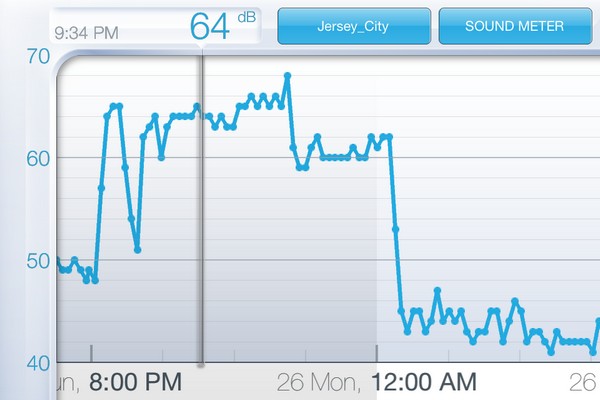
Rotate your device into landscape mode, and you can view any of these metrics on a timeline; the Weather Station takes measurements in 5-minute intervals. It’s a clever idea that makes the most of a phone or tablet’s display.
MORE: 20 Weather Apps for Your Smartphone
Web Interface
By logging onto my.netatmo.com, you can view the same content as on your smartphone all in one window. Current outdoor and indoor conditions are shown on the left, and a seven-day forecast, as well as historical climate data, takes up the rest of the screen. If you select one of the metrics on the left, such as CO2, its historical data will appear in the center of the screen.
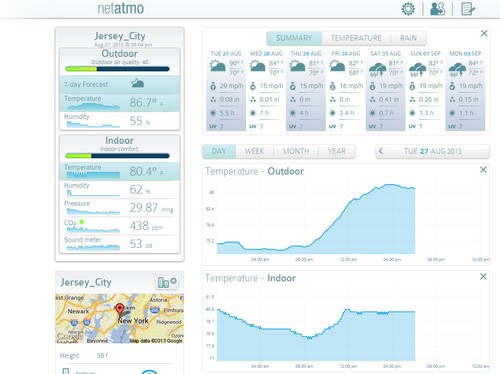
Also visible here is a map showing the location of your Weather Station, as well as the signal strength and battery life of the two modules.
Noise
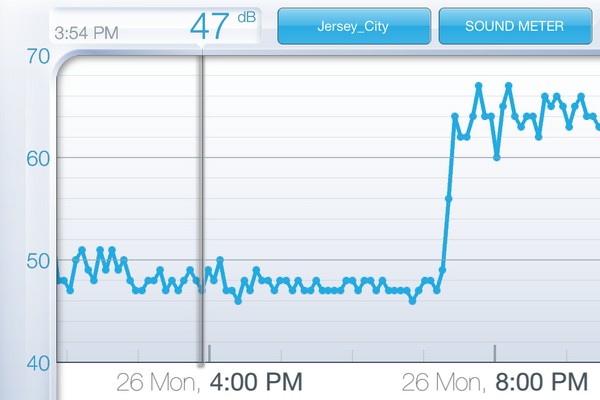
For testing purposes, we placed the indoor module on top of one of our speakers; after a few days of testing, we could see that the noise level ranged from about 45 decibels in the middle of the night to a peak of 60-70 decibels when we were watching TV. The Netatmo app says that prolonged exposure to sound levels higher than 65dB diminishes your ability to concentrate, and anything higher than 95dB can put your hearing at risk.
CO2
According to the Netatmo app, normal outdoor CO2 levels are around 400 parts per million; indoors, CO2 levels should remain below 1000 ppm, but can easily top that in a closed room with several people. The indoor module uses infrared light to measure CO2 concentration; the higher the level of CO2, the more light is absorbed.
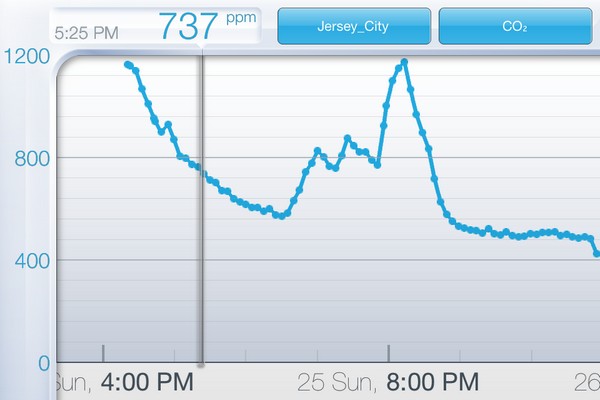
If the CO2 levels are good, the bubble in the app will be green; if the levels rise above 1000 ppm, the bubble will turn yellow, and a notification gets sent to your Android or iOS device. When we started cooking in our apartment and the CO2 level hit a high of 1174 ppm, we received an alert on our iPhone, and saw a sharp spike on the app.
If levels top 2000 ppm, the bubble will turn red, and a second alert will be sent to your smartphone. At this level, Netatmo recommends that you ventilate your room.
Verdict
If it just recorded temperature and humidity, the $179 Netatmo Urban Weather Station would be an overpriced gadget; after all, you can get that information from any number of free apps. However, it does provide other metrics, of which CO2 concentration is the most useful -- we don’t need an app to tell us that our stereo is too loud. If you want to know more about the conditions in and around your home, the Netatmo Weather Station is a helpful, if not completely necessary, tool.
Follow us @tomsguide, on Facebook and on Google+.

Michael A. Prospero is the U.S. Editor-in-Chief for Tom’s Guide. He oversees all evergreen content and oversees the Homes, Smart Home, and Fitness/Wearables categories for the site. In his spare time, he also tests out the latest drones, electric scooters, and smart home gadgets, such as video doorbells. Before his tenure at Tom's Guide, he was the Reviews Editor for Laptop Magazine, a reporter at Fast Company, the Times of Trenton, and, many eons back, an intern at George magazine. He received his undergraduate degree from Boston College, where he worked on the campus newspaper The Heights, and then attended the Columbia University school of Journalism. When he’s not testing out the latest running watch, electric scooter, or skiing or training for a marathon, he’s probably using the latest sous vide machine, smoker, or pizza oven, to the delight — or chagrin — of his family.
-
Shootn A good review. I would like to add that if you have a respiratory condition, such as COPD, the ability of this station to measure indoor CO2 levels and outdoor air quality are particularly useful. Outdoor air pollution levels can make a significant difference to the ability to breath for someone with a lung condition, and to know what one's performance is likely to be is worth the price of this station alone!Reply -
Shootn A good review. I would like to add that if you have a respiratory condition, such as COPD, the ability of this station to measure indoor CO2 levels and outdoor air quality are particularly useful. Outdoor air pollution levels can make a significant difference to the ability to breath for someone with a lung condition, and to know what one's performance is likely to be is worth the price of this station alone!Reply

